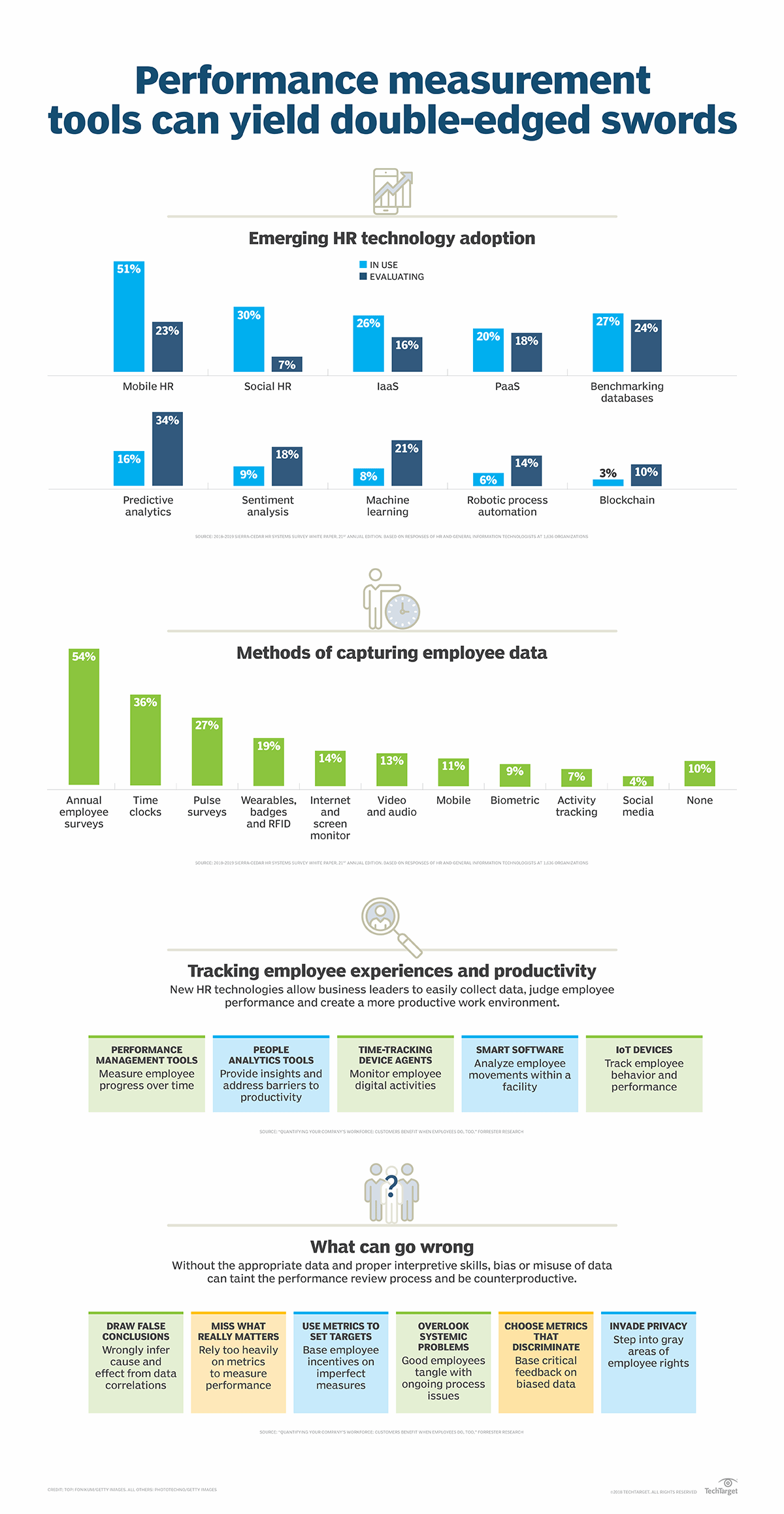- Share this item with your network:
- Download
Business Information
- Editor's letterTo improve employee engagement, companies must measure results
- Cover storyEmployee engagement in HR shapes performance and payroll tech
- InfographicMeasuring worker performance data requires skillful managers
- Feature5 secrets for a successful employee experience framework
- ColumnWorkplace engagement yields employee diversity and inclusion
- ColumnHR employee engagement platforms boost workplace productivity
Measuring worker performance data requires skillful managers
Emerging HR analytics tools make it easier for managers to collect data on employee experiences and better quantify workforce performance, but the data can lie when misinterpreted.There are a whole slew of new HR analytics technologies emerging to make it easier for managers to collect data on employee experiences and better quantify worker performance. At the same time, employees are equipping themselves with wearables and apps to track and improve their own productivity.
"Data is more valuable than oil," the comprehensive 2018-2019 Sierra-Cedar HR Systems Survey White Paper noted. The survey revealed that organizations are most likely to capture employee data outside of HR applications in annual employee surveys, while small businesses are more likely than large and medium companies to use internet and screen monitoring tools as well as mobile GPS and time-tracking apps.
It's thought that more-sophisticated automated tools to collect and analyze data based on emotions, behavior and productivity will more fairly measure an employee's performance with less human bias. Not so fast.
In large enterprises, the employee evaluation process may be less personal than in smaller companies where managers have greater interaction with employees. As a result, managers who lack the appropriate data, skills and training are more likely to draw the "wrong conclusions from correlations in data" when they rely on "what they can measure instead of what matters," according to a Forrester Research report.
